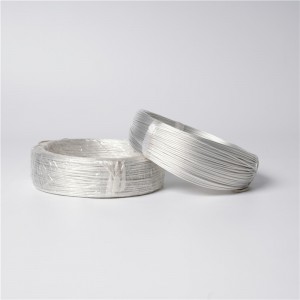Coaxial cable is a cable that has two concentric conductors and the conductor and shield share the same axis.
The most common type of coaxial cable consists of a copper conductor isolated by an insulating material. On the outside of the inner layer of insulation is another looped conductor and its insulator, and then the entire cable is covered by a sheath of PVC or Teflon material.
Baseband is currently the commonly used cable with a shield made of copper in the form of a mesh with a characteristic impedance of 50 (e.g. RG-8, RG-58, etc.).
Wideband coaxial cables are commonly used with shields that are usually stamped with aluminum and have a characteristic impedance of 75 (e.g. RG-59, etc.).
Coaxial cables can be divided into: coarse coaxial cables and fine coaxial cables according to their diameter size.
Coarse cable is suitable for larger local networks, it has long standard distance and high reliability, and can be flexibly adjusted according to the need of computer access location because the installation does not need to cut the cable, but the coarse cable network must be installed transceiver cable, installation is difficult, so the overall cost is high.
On the contrary, the installation of thin cable is simpler and less expensive, but because the installation process should cut the cable, both ends must be installed with basic network connectors (BNC), and then connected to both ends of the T-connector, so when there are many connectors, it is easy to produce bad potential problems, which is one of the most common failures of Ethernet in operation.
Both thick and thin cables are bus topologies, i.e., multiple machines on one cable. This topology is suitable for dense machine environments, but when one contact fails, the failure will affect all machines on the entire cable in series.
Fault diagnosis and repair are troublesome, therefore, will gradually be replaced by unshielded twisted pair or fiber optic cable.

Coaxial cables have the advantage of supporting high-bandwidth communications over relatively long, repeaterless lines, while their disadvantages are obvious.
First, the size of a large, thin cable diameter on 3/8 inch thick, to take up a lot of space in the cable duct.
second is the inability to withstand tangles, stresses and severe bending, all of which can damage the cable structure and prevent the transmission of signals.
The last is the high cost, and all these drawbacks are exactly what twisted pair can overcome, so it has basically been replaced by twisted pair-based Ethernet physical layer specification in the current LAN environment.
Post time: Nov-03-2022

